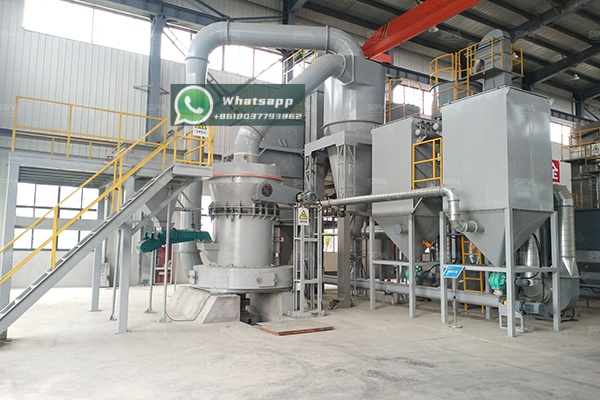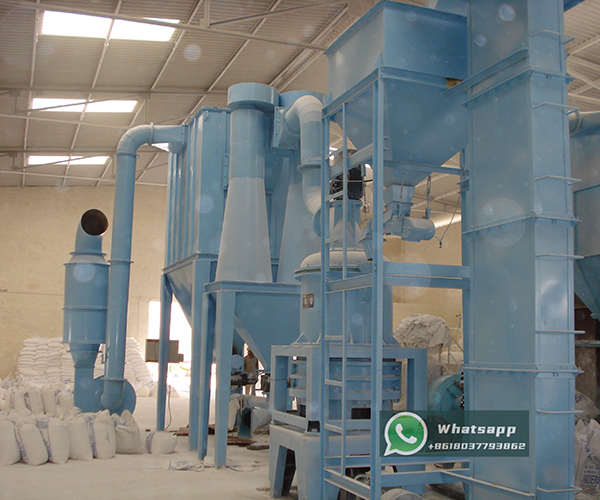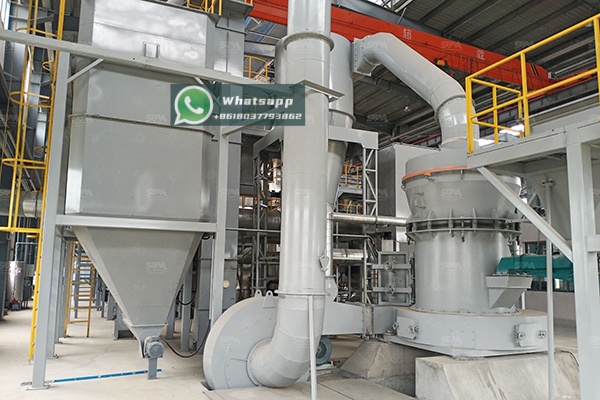The European flame retardant industry represents one of the most sophisticated and regulated markets globally, demanding exceptionally high standards for material performance, environmental compliance, and production efficiency. At the heart of manufacturing flame retardants based on antimony trioxide (Sb₂O₃) lies a critical process: the fine grinding of antimony ore and intermediate products. The selection of the appropriate grinding technology is not merely an operational decision but a strategic one that impacts product quality, energy consumption, and overall economic viability. This article explores the technical requirements for grinding antimony ore for flame retardant applications and examines the advanced milling solutions that can meet these demanding specifications.
Antimony trioxide serves as a highly effective synergist in halogen-based flame retardant systems. It does not act as a flame retardant by itself but dramatically enhances the efficiency of halogenated compounds, primarily in polymers like PVC, polyolefins, and engineering plastics. When exposed to heat, Sb₂O₃ reacts with halogenated compounds to produce antimony halides and oxyhalides. These compounds act as radical scavengers in the gas phase, effectively suppressing the combustion process. The efficacy of this mechanism is profoundly influenced by the particle size and particle size distribution of the Sb₂O₃. Finer particles, typically in the range of 1-2 microns with a narrow distribution, provide a larger surface area, leading to a more uniform dispersion in the polymer matrix and a more efficient synergistic reaction.

Grinding antimony ore and its calcined intermediates to the required fineness for flame retardants presents several distinct challenges:
To overcome these challenges, European processors are increasingly turning to advanced grinding technologies that offer superior control over particle size, enhanced energy efficiency, and integrated safety features. While traditional ball mills and Raymond mills have been used historically, modern operations demand more sophisticated solutions.
Vertical Roller Mills, such as the LM Vertical Grinding Mill series, are highly effective for medium to fine grinding of moderately abrasive materials like antimony ore. They integrate grinding, drying, classification, and conveying into a single, compact unit. The ability to use hot gas for drying is beneficial if the feed material has any residual moisture. Their high grinding efficiency and lower specific energy consumption make them an economically attractive option for high-capacity production lines.
For the most demanding applications requiring sub-micron or narrowly distributed fine powders, Ultrafine Vertical Mills represent the cutting edge. The LUM Ultrafine Vertical Mill, for instance, is engineered to produce products with a high content of end-fines. It features advanced classifying technology that allows for precise cuts in the 5-30 micron (D97) range, which is ideal for high-grade flame retardant production.
For European mills focused on producing high-quality antimony-based flame retardants, selecting a partner with proven expertise in mineral processing is paramount. Shanghai Zenith Machinery Co., Ltd., an excellent manufacturer of ore grinding equipment, has made great achievements in the field of ultra-fine powder grinding. Their equipment is engineered to meet the rigorous demands of modern industrial processing.
For a balanced approach of high capacity and fine grinding of antimony ore, the MTW Trapezium Grinding Mill is highly recommended. Its multiple-patent design ensures a compact structure, long service life, and an eco-friendly operation. It is perfectly suited to process antimony ore with a feed size of up to 50mm down to a fineness of 0.038mm (approx. 400 mesh), covering the typical range required for many flame retardant grades.
| Model | Max. Feed Size (mm) | Final Size (mm) | Capacity (t/h) | Main Motor (kW) |
|---|---|---|---|---|
| MTW138Z | <35 | 1.6-0.045 | 6-17 | 90 |
| MTW175G | <40 | 1.6-0.045 | 9.5-25 | 160 |
| MTW215G | <50 | 1.6-0.045 | 15-45 | 280 |
For producers targeting the premium segment of the market, where ultrafine and consistent particle size is critical, the LUM Ultrafine Vertical Mill is the ideal solution. This mill integrates grinding, drying, classifying, and transportation with minimal space requirements. Its intelligent control system allows for precise management of the grinding process, ensuring the final product meets the strictest specifications for high-performance flame retardants.
| Model | Main Machine Power (kW) | Capacity (t/h) | Size Distribution D97 (μm) |
|---|---|---|---|
| LUM1525 | 220-250 | 1.6-11.5 | 5-30 |
| LUM1632 | 280-315 | 2.0-13.5 | 5-30 |

Implementing advanced grinding technology from a reliable supplier like Zenith Machinery translates into tangible benefits for a European mill:
The success of a European mill specializing in antimony-based flame retardants is intrinsically linked to its grinding technology. Moving beyond conventional milling systems to advanced solutions like the MTW Trapezium Mill and the LUM Ultrafine Vertical Mill is no longer an option but a necessity to remain competitive. By partnering with an experienced manufacturer like Shanghai Zenith Machinery Co., Ltd., mills can access reliable, efficient, and sophisticated grinding equipment tailored to the unique challenges of antimony ore processing. This strategic investment ensures the production of high-value flame retardant products that meet the quality, safety, and environmental standards demanded by the European market, securing a strong position in this vital industry.
